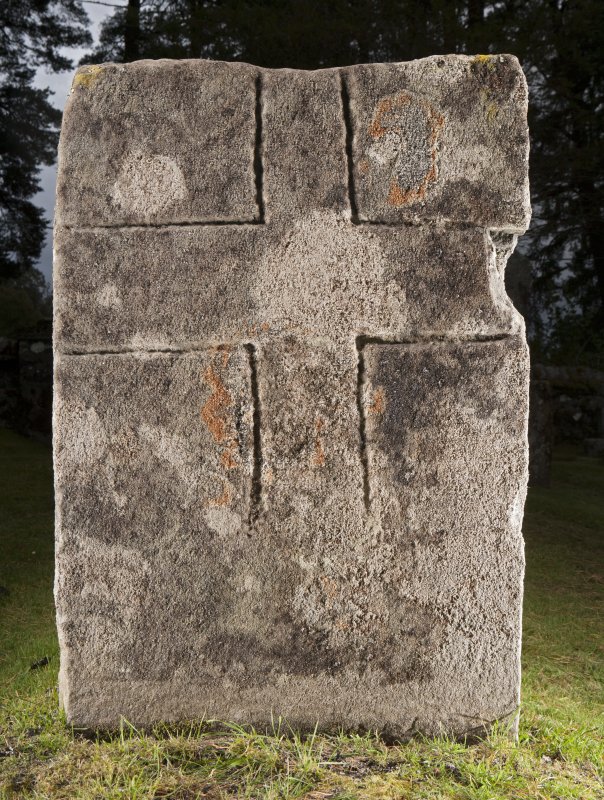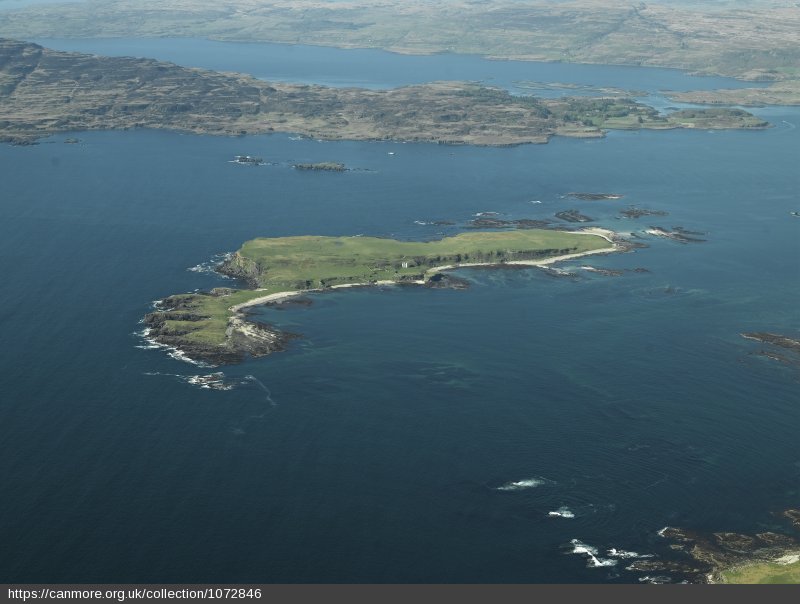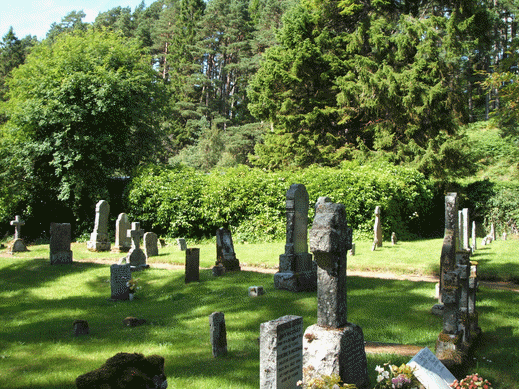According to his biographer, St Adamnán, when Colum Cille (St Columba) visited the court of King Brude, he was accompanied by two other saints - St Congal and St Kenneth. Congal had been an obvious choice for Colum Cille to make from the community at Iona since Congal was a Pict and had none of the problems of language which Columba had.
Likewise, St Kenneth, who had been born at Keenaght in County Londonderry in 517 AD, was a Pict - of the tribe of Corco Dalann. His father, Lugayd, was a bard and Kenneth seems to have inherited certain poetical skills from him. He was a fellow pupil of St Columba at Finan's famous school at Clonard. Following this he crossed the seas to Wales and placed himself under the direction of St Cadoc at Llancarfan. After some time, and perhaps following a visit to Rome, Kenneth returned to his home for a time before crossing to Scotland. His work is remembered by church dedications among the Hebrides and in Kintyre. In the Rev. A. Macmillan's Iona, p.35, he says that "there was a chapel dedicated to St Kenneth on Iona, which stood within the area occupied by the present parish church." The parish of Laggan in the the days of the old Diocese of Moray was known as Logy-Kenny and in the Gaelic it is called Laggan-Choinnich, i.e. the hollow of St Kenneth. Tradition says that the present ruin marks the church built by Allan-nan-Creach, or Allan of the Spoils, one of the Lochiel family (he was the son of Donald Dubh and Alan's son is reckoned to be the first to have been known as 'the Lochiel'). Tradition says that he had founded it, and six other churches, as an atonement for his many crimes. Allan's church is supposedly situated on the site of St Kenneth's ancient foundation.

Above: Incised cross-slab at Logykenny.
© HES Canmore Database
St Kenneth, who in Ireland is known as St Canice, is most famously linked with his principal foundation of Achadh-bó in Ireland. But the Martyrology of Donegal also speaks of "an abbey-church of his at Cill-righmonadh (St Andrews in Scotland)". Cainnech's name is also still recalled in the ruins of an ancient church, Kil-Chainnech (Cill Choinnich)) on Tiree


Inch Kenneth, off Mull, from the air (left) and the east end of St Kenneth's chapel (right).
© HES Canmore Database
Of great interest to us is the fact that the church at Laggan (Logy-Kenny) is so close to the one dedicated to St Columba at Kingussie and also to that of St Adamnán at Loch of Insh. It seems to set out before us a very clear pathway for the clerics of the Iona School to travel up Loch Laggan and into Strathspey. In these early times, travel by water was much easier than by overland routes and we can see what an advantage the great length of Loch Laggan would be to the traveller. Adamnán says that Colum Cille travelled to Brude's court in part by 'sailing' up Loch Ness and it takes little imagination to envisge a succession of early saints using Loch Laggan in the same way.

Above: The view from Laggan-Kenny looking south-west down Loch Laggan.

Above: The ruins of Laggan-Choinnich now overgrown with ivy.